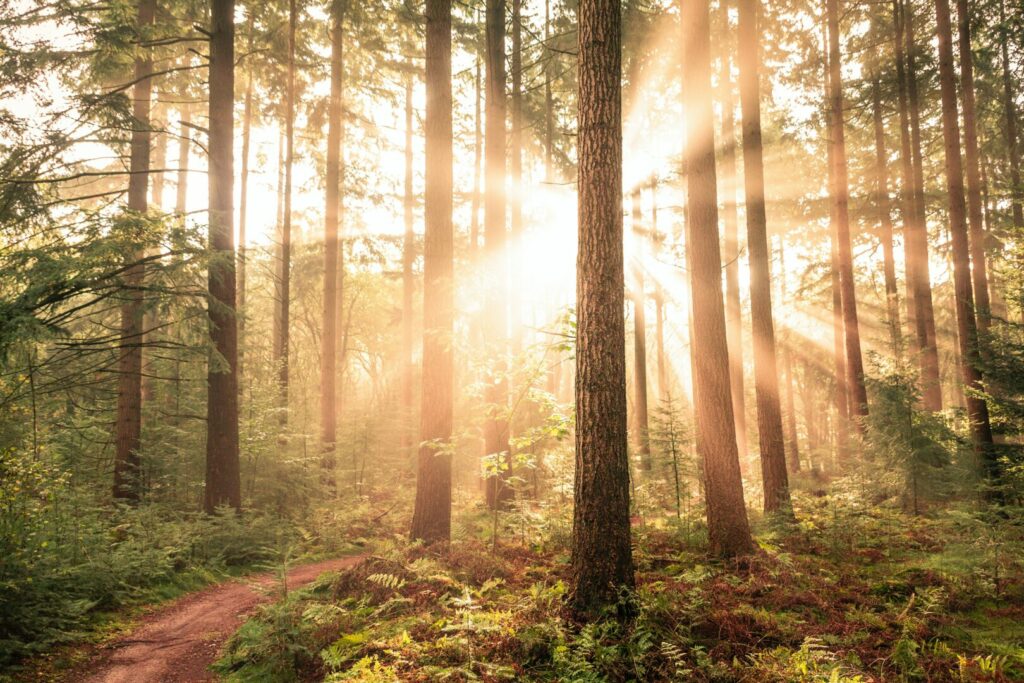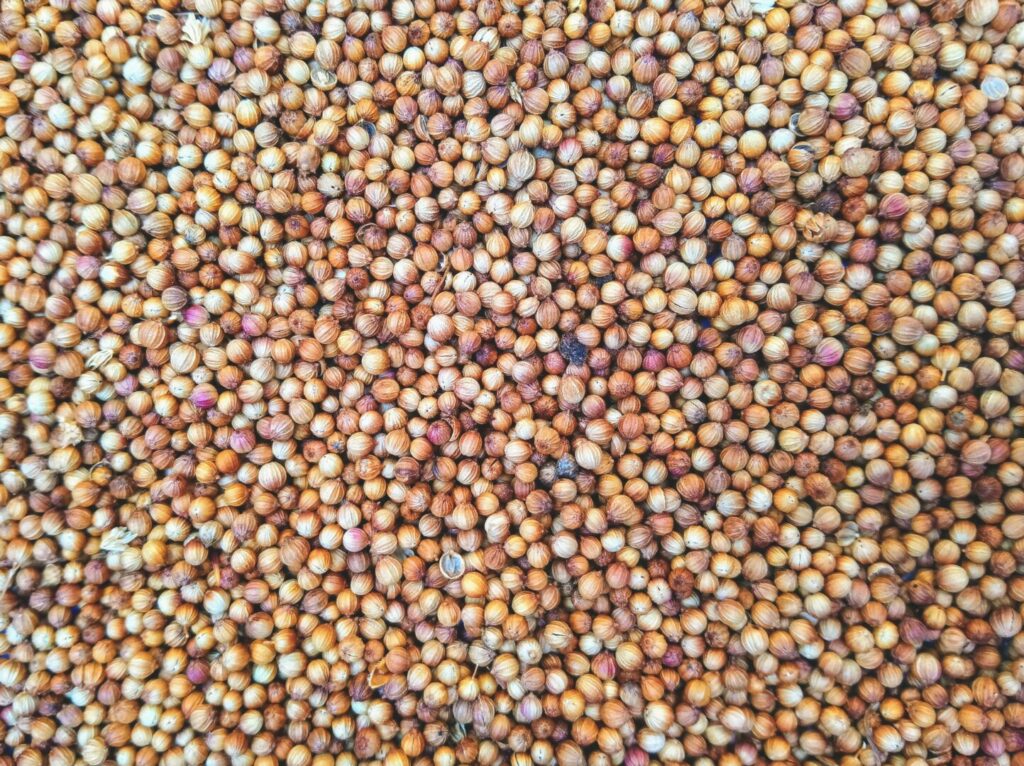When you read the Gospels with fresh eyes, something becomes clear: Jesus did not teach in classrooms. He taught in fields, on mountainsides, in boats, under trees, and along lakeshores. His message was woven into the world around Him. Mustard seeds, lilies, grains of sand, fig trees, and sparrows. The parables through which Jesus taught were often driven by nature-based metaphors.
Jesus’ childhood in Nazareth, situated near fertile valleys and the Sea of Galilee, shaped Him in a landscape full of farmers, fishermen, fig trees, and migrating birds. As He traveled, He lived close to the land, sharing meals, harvesting grain with His disciples, and praying outdoors through the night.
For Jesus, nature was not scenery. It was revelation.
Creation is not separate from our life of faith. It is part of how we learn to follow Christ. Jesus’ earliest followers understood this. They understood that God could be encountered in “the lilies of the field,” “the birds of the air,” and the cycles of planting and harvest.A parable is a story placed “side-by-side” with a spiritual truth to make meaning clearer. Jesus used them because they connected the mysteries of the Kingdom of God to things His listeners already understood.
Most people Jesus spoke to were small-scale farmers. They were people who knew the patience of sowing, the fragility of soil, and the hope that comes with a first sprout. So when He spoke about seeds, vines, storms, weeds, or fruit trees, He wasn’t being poetic. He was speaking their language.
This perspective is familiar to indigenous communities who see nature as “a relative, not a resource.” Jesus used parables to teach the same truth: creation is not disposable or separate. It is a living partner in our understanding of God.

What is a Parable and Why Did Jesus Speak in Them?
The word “parable” comes from the Greek parabole, meaning “throwing alongside”. Jesus’ parables are stories that are put into a side-by-side comparison with the truth to reveal a deeper meaning.
“As soon as its twigs get tender and its leaves come out, you know that summer is near.”
—Matthew 24:32
Fig trees were everywhere in first-century Israel. To people who depended on rainfall and harvest cycles, these trees were seasonal calendars.
In this parable, Jesus shows how attentive observation of nature helps us understand the times. Just as the fig tree signals change, creation continues to speak today: ecosystems unraveling, forests disappearing, climate patterns becoming less predictable.
Plant With Purpose’s work in rewilding landscapes echoes this idea. Communities learn to observe when land is healing and when it is stressed. Jesus invites us to develop the same ecological awareness.
In Luke 13, Jesus tells a story of a fig tree growing in a vineyard, taking up space yet producing no fruit. The farmer wants to cut it down, but the gardener asks for more time—offering to tend the soil, fertilize it, and see if it can still flourish.
This parable isn’t just about judgment. It’s about patient restoration.
The gardener mirrors God’s compassion: He sees potential in what looks barren. In environmental terms, this is the work of regeneration believing depleted soil can grow again, that forests can return, that communities harmed by environmental neglect can recover.
This message resonates with Plant With Purpose’s global partners who note how, “restoration is slow work, but it is holy work.”

Jesus describes a seed that grows “night and day,” even when the farmer does not understand how. Growth is mysterious. It invites humility.
This parable reminds us:
- We are not the ultimate source of life.
- God is already working in creation.
- Our role is to tend, trust, and participate.
Modern ecological science affirms what Jesus’ listeners already knew. Soil is alive. A teaspoon of healthy soil contains more organisms than there are people on Earth. When we protect land, plant trees, or adopt regenerative farming practices, we are partnering with the quiet work God is already doing beneath the surface.
The mustard seed was a familiar sight around Jerusalem—tiny, unimpressive, yet capable of growing into a sprawling shrub where birds could rest.
Jesus uses this seed to show how God multiplies small acts into life-giving abundance.
For today’s followers of Christ, creation care often starts small:
- One family planting trees
- One farmer restoring soil
- One church learning about creation care
- One community reviving traditional ecological knowledge
As one indigenous leader shared in Plant With Purpose’s global programs, “Healing the land begins with small, faithful steps.”
Jesus would agree.

Many people ask, “Would Jesus be an environmentalist?”
But this question can miss the point.
He embodied something older: biblical stewardship.
If an environmentalist is “someone who advocates for protecting the environment,” then Jesus cared deeply for creation. He also cared for the people who depend on creation, especially the poor.
Environmental degradation and rural poverty are linked today just as they were in Jesus’ time. Deforested hills produce failing harvests. Unpredictable weather leads to hunger. Damaged soil forces families into debt or migration
Caring for creation becomes an act of compassion and justice—deeply aligned with Christ’s mission.

If creation was one of Jesus’ favorite teaching tools, then protecting creation is part of discipleship.
And it means listening to those who have cared for creation long before global conversations began, like indigenous leaders, local farmers, and rural communities whose wisdom matches the ecological knowledge woven into Jesus’ parables.
So, would Jesus be an environmentalist?
Whether or not you feel Jesus would have been considered a true environmentalist, there is one thing I want you to consider. God was recognized through nature by various men in the Bible, and Jesus used nature to express God’s Word to his followers. So, it’s safe to say that nature is an important way that God speaks to us. If we don’t work to protect the earth as God created it will we even be able to hear God anymore?
If we allow creation to degrade beyond recognition, we risk silencing one of the ways God speaks.
The invitation is simple:
Look at the seeds, the soil, the birds, and the trees. See what Jesus saw. Hear what Jesus heard. Learn as Jesus taught, through the witness of creation.
When we protect the Earth, we protect one of God’s oldest languages.




















Written very well.